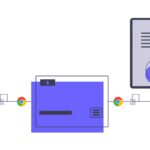Front end development sphere is moving rapidly and having holistic knowledge of the trends can make the huge difference in building better technology solutions. The number of technologies, frameworks keep on changing time to time. So we would like to take this opportunity to highlight some interesting design trends that might turn out to be great help to you.



